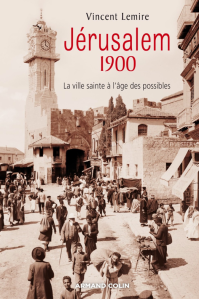 The memoirs of a resident of Ottoman Jerusalem, newly published in English, give an important insight into everyday life in an era about which little is widely known, writes Sarah Irving in a review for Electronic Intifada.
The memoirs of a resident of Ottoman Jerusalem, newly published in English, give an important insight into everyday life in an era about which little is widely known, writes Sarah Irving in a review for Electronic Intifada.
The Storyteller of Jerusalem collects the memoirs of Wasif Jawharriyeh, an administrative worker, merchant and silk farmer, from 1904-1948.
The duration of the memoirs cover a period of major transition, including the dissolution of the Ottoman Empire, the rule of Palestine by Britain under the Mandate, and the creation of Israel in 1948.
The volume is introduced and edited by Salim Tamari and Issam Nassar. Tamari previously provided the foreword to an English translation of another valuable early-twentieth century Palestinian memoir, A Young Palestinian’s Diary, 1941-1945: the Life of Sami Amr, and published a collection of essays on this period.
Jerusalem life as described in Jawharriyeh’s diaries contrasts sharply with accounts of the city found in colonial texts. As Irving writes:
“Jerusalem in the 1920s, it seems, was less the traditional backwater depicted in some accounts of the British Mandate, and more a city whose affluent cultural scene was a smaller version of that to be found in other cosmopolitan capitals in the region and across Europe.”
At the same time, Irving highlights a “growing sense of darkness” in Jawharriyeh’s memoirs, which we read now as a document from a lost society and, as she notes, “a bitter-sweet glimpse into what Jerusalem might have been.”
